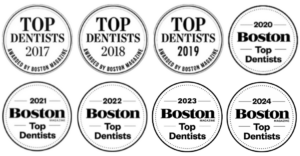How Does Invisalign Move Your Teeth
People who want straight teeth but don’t want to wear traditional braces often choose Invisalign, a rapidly expanding treatment. Prospective patients wonder how Invisalign straightens teeth and whether it’s really better than conventional braces. Here’s how this innovative orthodontic treatment works.
Why Do Teeth Move with Invisalign?
You should first learn about the jaw and how teeth move with Invisalign. Your teeth are held in place in your jaw through the alveolar bone and the periodontal ligament, which connects the roots of your teeth to your jaw. To move your teeth with Invisalign, the alveolar bone around the tooth’s roots needs to be altered.
The Invisalign treatment involves creating a series of 3D models of the teeth and gums to track each tooth’s movement. The pressure on each tooth is adjusted to break down bone and rebuild it where needed most gradually.
The teeth are then gently moved into the correct position without any metal hardware. Simple cases can be completed in about eight weeks; more complex cases take up to two years, especially if your smile journey requires Invisalign refinements.
This is why the Invisalign treatment process takes time. It takes time for the jawbone to remodel itself and form strong roots. All of this happens while you wear your aligner trays, which provides passive root development.
How Does Invisalign Work?
Invisalign aligners are made of a clear, smooth plastic material that looks like a mouthguard. They fit inside your mouth, but you can’t see them. You wear your aligner trays for 21 to 24 hours a day, removing them only to eat, brush your teeth, and floss.
While you wear your aligner trays, they push your teeth in the direction they should go. They also separate your teeth into correct positions that are relaxed. This helps you develop the jawbone density that your teeth need to strengthen. Invisalign exerts on your teeth passive pressure, instead of traditional braces, which exert active pressure.
Which Dental Issues Does Invisalign Treat?
Before you decide to get Invisalign for straighter teeth, ask your orthodontist if clear aligners are the best option for you. Only they can determine whether they are right for you.
Many people choose Invisalign over traditional braces to straighten their teeth. Invisalign can correct several dental issues, including crookedness, crowding, and malocclusion. Invisalign might work just as well as traditional braces for people with minor problems.
- Crooked Teeth
- Overbite
- Underbite
- Crossbite
- Open Bite
- Spacing Issues
- Crowded Teeth
Clear aligners still have limitations despite recent advances in technologies, like Invisalign attachments. If your teeth are not a good shape for the standard clear aligners or have large gaps, you will probably need traditional braces to correct your smile. Your orthodontist can figure out what is best for you.
Conclusion
Invisalign has many benefits. It provides straight teeth without metal hardware, which makes it more discreet. This makes it easier to wear braces in public without being self-conscious. Invisalign is also practical, as it can be worn while the patient is sleeping; this provides the most effective and efficient treatment.
Invisalign is a popular option for adults who want their teeth to be straighter. It can also be used with other orthodontic appliances, including retainers, to give you the smile you want.
Established in 1991 by Dr. Fawn Rosenberg, Lexington Smile Studio sets the standards for exceptional care where we provide a full range of dental services for your entire family. Our dental services include cosmetic dentistry, prosthodontics, implant dentistry, periodontics, and laser dentistry. If you’re interested in Invisalign treatment in Lexington, we’re here to help! Book an appointment today and get the smile of your dreams next!



